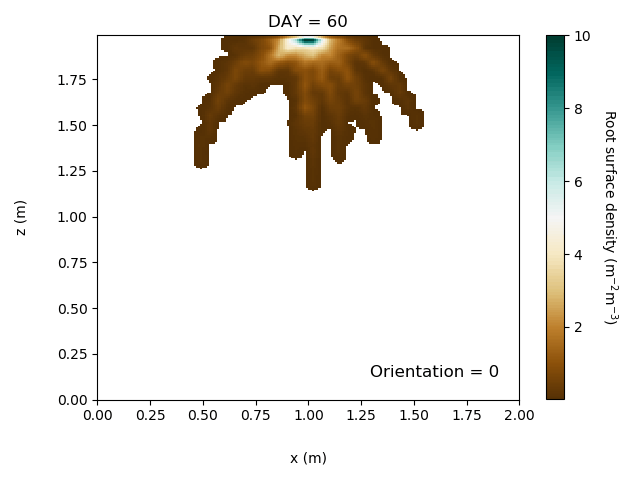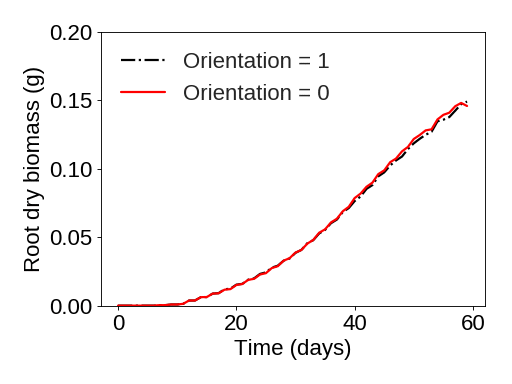Models of root system architecture are often used for studying plant-soil interactions. These models are required to simulate the structural and spatial distribution of the root system, the integration of root level processes (e.g., elongation, branching) with soil properties, and root interaction with the airborne part of a plant. Only a few of them, however, have been integrated into larger crop or ecosystem models because they are too difficult to parameterise and they require large amounts of computational power.
ArchiSimple has been designed to enable the representation of the architectural diversity coming from various plant species interacting with environmental conditions (Pagès et al., 2014). It is a dynamic architectural and functional model, in which the root system is represented as a set of small segments and meristems. The root system is modified by functions describing their development, including emission of new roots from the shoot, elongation of existing roots, acropetal branching, radial growth, and self-pruning following root decay. Model parameters can be estimated independently from observations or from the literature. Calibration and evaluation for 6 species (Musa spp., Pisum sativum, Prunus persica, Teucrium botrys, Thlaspi perfoliatum, and Zea mays) are described in Pagès et al. (2014).
In order to make a cereal root generated by ArchiSimple match the biomass of that one generated by FSPM-GroIMP, a group of variables related to the soil, as described in ArchiSimple, were evaluated in a sensitivity analysis.
The file that contains the description of soil properties within ArchiSimple has a group of 4 variables: Croiss (favours growth); Ramif (favours ramification); iCMeca (intensity of constraint); and Orientation (0 – iso; 1 – vertical).
Croiss (favours growth)
Croiss = variable; Ramif = 1.0; iCMeca = 0.00; Orientation = 0 (iso).

Figure 1a) Effect of variable Croiss on cereal root system in the 60th day of development.

Figure 1b) Dry root biomass (g) along 60 days with Croiss varying from 0.1 to 1.0 in intervals of 0.1.
Ramif (favours ramification)
Croiss = 0.5; Ramif = variable; iCMeca = 0.00; Orientation = 0 (iso).

Figure 2a) Effect of variable Ramif on cereal root system in the 60th day of development.

Figure 2b) Dry root biomass (g) along 60 days with Ramif varying from 0.1 to 1.0 in intervals of 0.1.
iCMeca (intensity of constraint)
Croiss = 1.0; Ramif = 1.0; iCMeca = variable; Orientation = 0 (iso).

Figure 3a) Effect of variable iCMeca on cereal root system in the 60th day of development.

Figure 3b) Dry root biomass (g) along 60 days with iCMeca varying from 0.01 to 0.10 in intervals of 0.01.
Orientation = 0 (iso) and 1 (vertical)
Croiss = 0.5; Ramif = 1.0; iCMeca = 0.00; Orientation = variable.

Figure 4a) Effect of variable Orientation on cereal root system in the 60th day of development.

Figure 4b) Dry root biomass (g) along 60 days with Orientation varying between 0 (isotropic growth) and 1 (vertical growth).
References
Pagès, L., Bécel, C., Boukcim, H., Moreau, D., Nguyen, C., & Voisin, A. S. (2014). Calibration and evaluation of ArchiSimple, a simple model of root system architecture. Ecological Modelling. https://doi.org/10.1016/j.ecolmodel.2013.11.014